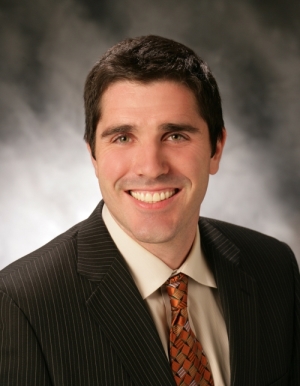
Shoulder
Treatment for Shoulder Conditions
At Washington Township Medical Foundation Orthopaedics, we address a range of shoulder injuries and conditions. Our team is proud to offer innovative care and solutions, ensuring optimal patient outcomes. We believe in giving our Fremont patients top-quality care and treatment for all types of shoulder problems.
Learn more about our shoulder treatments:
- Acromioclavicular (AC) Joint Repair & Reconstruction – The acromioclavicular (AC) joint is found between the acromion and clavicle bones. When injuries occur at the AC joint, it is usually due to trauma such as a fall. Your doctor can perform an arthroscopic or traditional procedure to repair / reconstruct this joint if needed.
- AC Joint Reconstruction – A common cause of AC joint injuries is involvement in contact sports including soccer, football, and rugby. This injury can also be called a separated shoulder, which is different than a dislocated shoulder. Remedies for AC joint injuries may include physical therapy strengthening exercises, or may require surgery.
- AC Joint Surgery – Surgery to the AC joint can occur arthroscopically or using a traditional open procedure. Arthroscopic surgeries are minimally invasive and protect the patient from many of the risks associated with traditional procedures, which require larger incisions.
- Adhesive Capsulitis / Frozen Shoulder – This condition, also known as frozen shoulder, involves the inflammation of the shoulder capsule resulting in excess tissue production, which can cause stiffness and loss of mobility. The cause of this condition is not known. Treatment options may include medications, physical therapy, and surgery.
- Arthroscopic Rotator Cuff Repair – The rotator cuff is the name used to describe a number of tendons and muscles that serve to support the shoulder joint. When these tendons and muscles are damaged due to an injury or strain from overuse, it can cause inflammation, weakness, and significant pain. In some cases, surgical repair may be necessary.
- Broken Collarbone – Clavicle fractures are often caused by severe blows including those caused by car accidents. In some cases, the break may heal on its own with support from a shoulder sling, accompanied by anti-inflammatory medications and rest. In other cases, surgery may be necessary. Seek medical attention immediately if you have broken your collar bone.
- Shoulder Instability – Loose shoulder joints often occur after serious injuries, resulting in slipping and dislocation, which may cause arthritis over time. Two examples of common arthroscopic surgical procedures used to remedy shoulder instability are capsular shift and Bankart repair.
- Labral Injury – The labrum is a layer of cartilage that blankets the shoulder socket, providing stabilization to the joint. The labrum can be torn, either by injuries or repetitive movements. Shoulder pain or “popping” can be signs of a labral injury such as a SLAP lesion or Bankart lesion.
- Labral Repair – Pain management coupled with physical therapy can be an effective treatment for many labral injuries, but in other cases, surgery may be necessary. In a labral repair procedure, your doctor will attempt to remedy an unstable shoulder using staples, sutures, or anchors. In most cases, this is a minimally invasive, arthroscopic procedure involving a tiny incision. Some cases involving significant labral tears may require a traditional open surgery.
- Shoulder Arthroscopy – Minimally invasive techniques such as arthroscopy allow patients to return to their normal lives faster after surgery with better results and less risk of complications. Arthroscopic procedures use tiny incisions, into which an arthroscope—a small fiber-optic device—facilitates the procedure. Some shoulder arthroscopy procedures include treatments for labral tears, rotator cuff tears, biceps tendonitis, AC joint arthritis, and impingement syndrome.
- Shoulder Dislocation – Shoulder dislocation occurs when the humerus or arm bone becomes removed from the shoulder socket. Symptoms may include pain, instability, weakness, bruising, numbness, and swelling. See your doctor if you believe your shoulder has been dislocated.
- Shoulder Impingement – A common cause of shoulder pain is known as impingement, which occurs when soft tissue is impinged in the joint. Causes or contributing factors involved in this condition may include ligament calcification, rotator cuff tears, bone spurs, misshapen acromion, rotator cuff tendonitis, and bursitis. Patients with this condition experience pain, weakness, and loss of mobility. This disorder can be chronic. Your doctor will most likely recommend a conservative treatment approach combining rest, physical therapy, and non-steroidal anti-inflammatory drugs.
- SLAP Lesion Repair – The glenoid labrum is susceptible to an injury called a Superior Labral tear / lesion from Anterior to Posterior—or the “SLAP” tear. In almost all cases, this injury will require surgery in order for the shoulder to properly heal. The surgery is quick and can be accomplished using minimally invasive techniques for a small incision and faster recovery time.
Find out more about common shoulder injuries and treatments at this site, which is presented by the American Academy of Orthopedic Surgeons and OrthoInfo: https://www.orthoinfo.org/en/search/?q=shoulder.
-
Orthopaedics Orthopaedic Surgery, Orthopaedics, Physical Medicine / Rehabilitation, Sports Medicine 38690 Stivers St.
#A
Fremont, CA 94536
(510) 248-1040 More Information
View All
/



[3].jpg)
